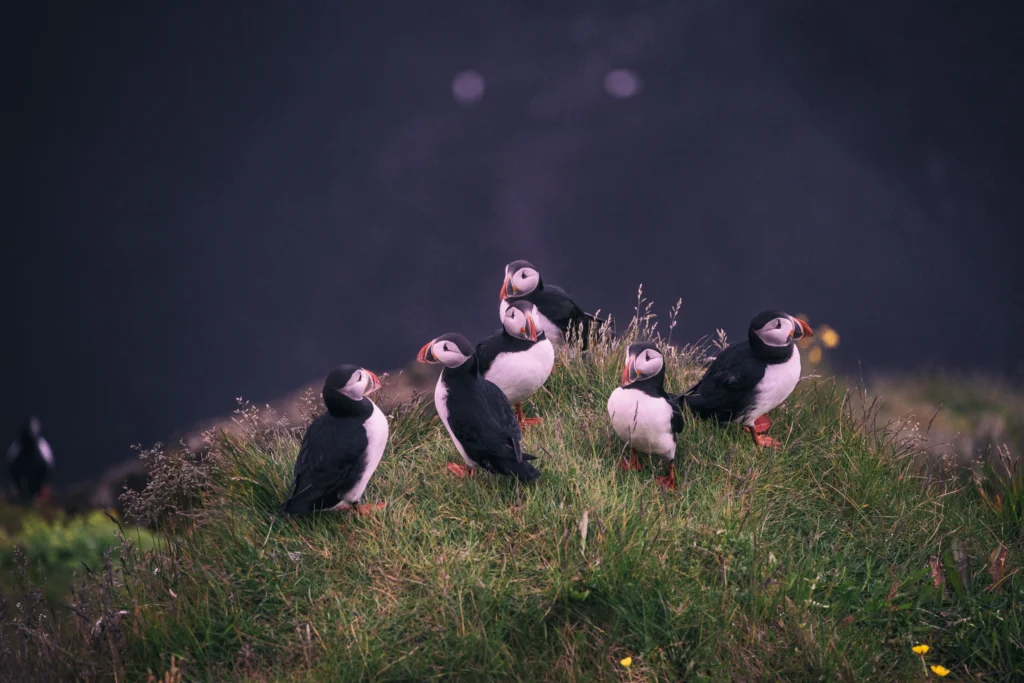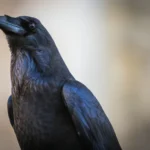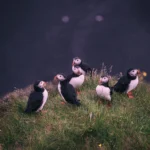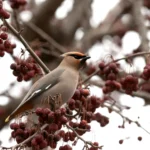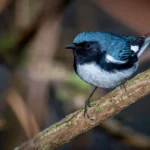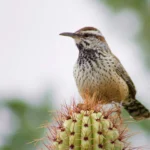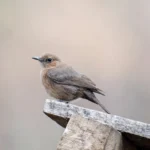Penguins are some of the most recognisable birds in the world, with their upright posture, tuxedo-like plumage, and charming waddle. While true penguins are found mainly in the Southern Hemisphere, especially Antarctica, several other birds across the globe share a surprisingly similar look. These penguin-like species may not belong to the same family, but their colours, shapes, or behaviours can easily remind you of penguins at first glance.
From seabirds like auks and puffins to flightless oddities like the Great Auk (now extinct), these creatures showcase fascinating examples of convergent evolution—where different species evolve similar traits to adapt to similar environments. In this guide, we’ll explore a list of birds that look like penguins, covering their appearance, habitat, diet, behaviour, breeding habits, and conservation status.
Table of Contents
1. Atlantic Puffin
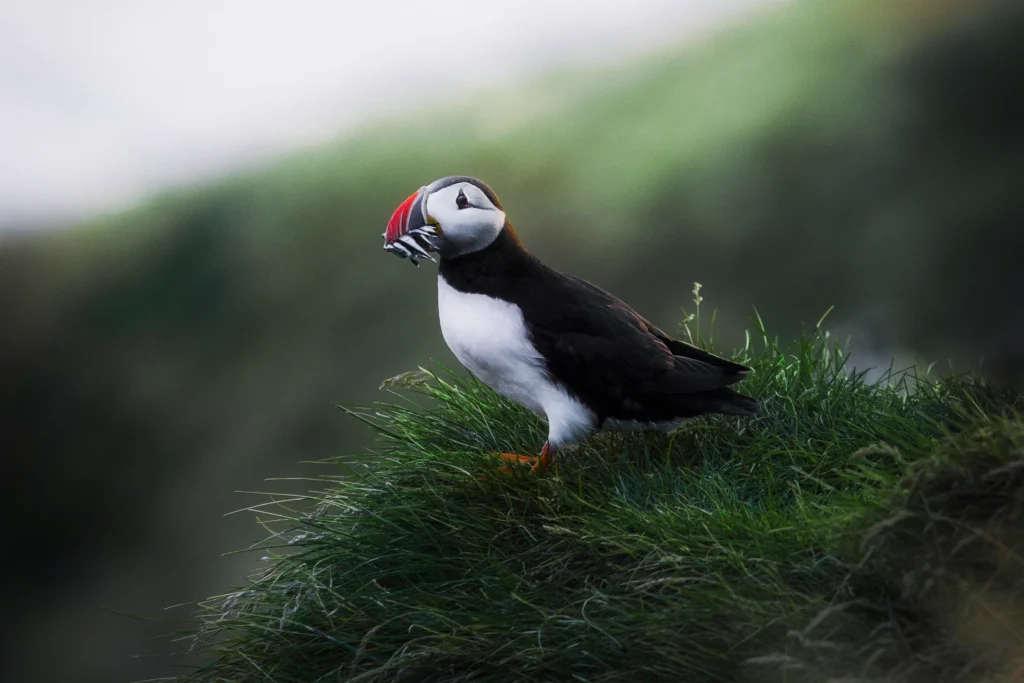
Appearance:
The Atlantic Puffin is often dubbed the “clown of the sea” thanks to its colourful beak, but from a distance, its upright stance, black-and-white body, and waddling walk give it a strong resemblance to a miniature penguin.
Habitat:
These birds nest along rocky cliffs and islands of the North Atlantic, from Maine to Iceland and the British Isles.
Diet:
Puffins feed mostly on small fish such as herring and sand eels, which they catch by diving underwater using their wings to swim.
Behavior:
Puffins are expert divers and swimmers but awkward on land, much like penguins. They live in large colonies and communicate with soft growls and bill-tapping.
Breeding:
They dig burrows or nest in crevices. A single egg is laid per year, and both parents take turns incubating and feeding the chick.
Conservation:
While still common in some regions, puffins face threats from overfishing, climate change, and pollution. Conservation efforts are underway in parts of the UK and US.
Also Read : 15 Birds Found in Arizona Desert
2. Common Murre (Guillemot)
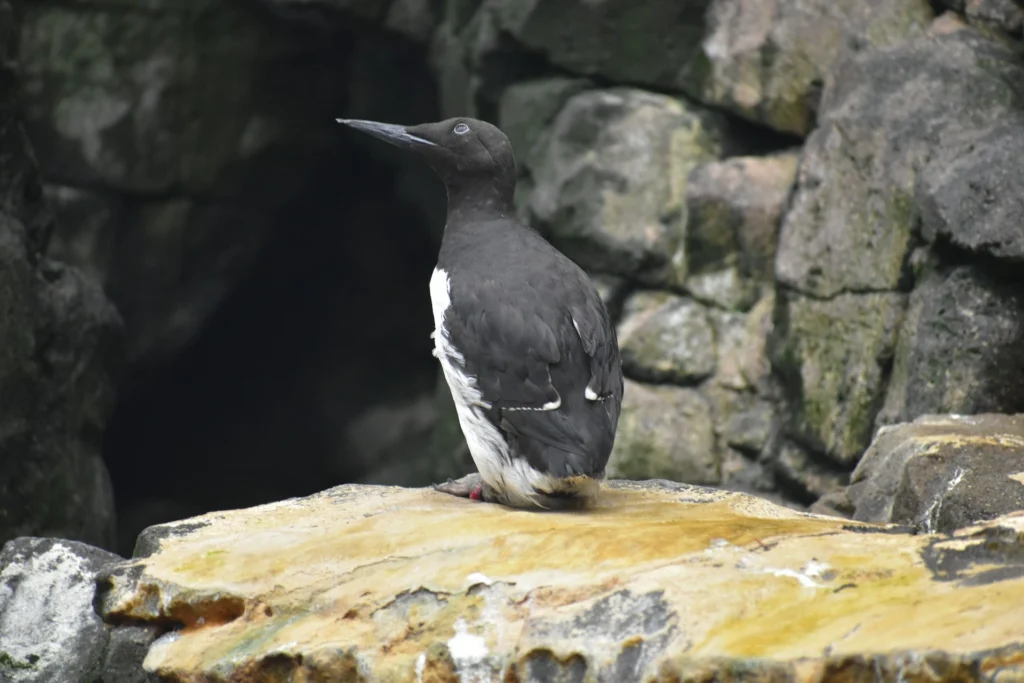
Appearance:
The Common Murre stands upright like a penguin and has a sharply defined black-and-white plumage. When viewed from the front, it looks very penguin-like, especially in its breeding plumage with a slender, pointed beak.
Habitat:
Murres nest on narrow cliff ledges along the coasts of the North Atlantic and North Pacific. They prefer cold, marine environments and are often seen in large colonies.
Diet:
Their diet consists mainly of small schooling fish like capelin, herring, and sardines, which they dive for underwater. They may also eat squid and crustaceans.
Behavior:
Murres are agile swimmers and divers, propelling themselves underwater with their wings. However, they’re clumsy on land and in flight. Their social colonies are noisy and tightly packed.
Breeding:
They lay a single pear-shaped egg directly on bare rock, and both parents share incubation and feeding duties. Chicks jump off the cliff ledge before they can fly, guided by the calls of their parents.
Conservation:
Although populations are generally stable, murres are vulnerable to oil spills, entanglement in fishing gear, and warming oceans that affect fish availability.
Also Read : Brown Birds in Arizona: 15 Subtle Yet Stunning Desert Species to Know
3. Razorbill
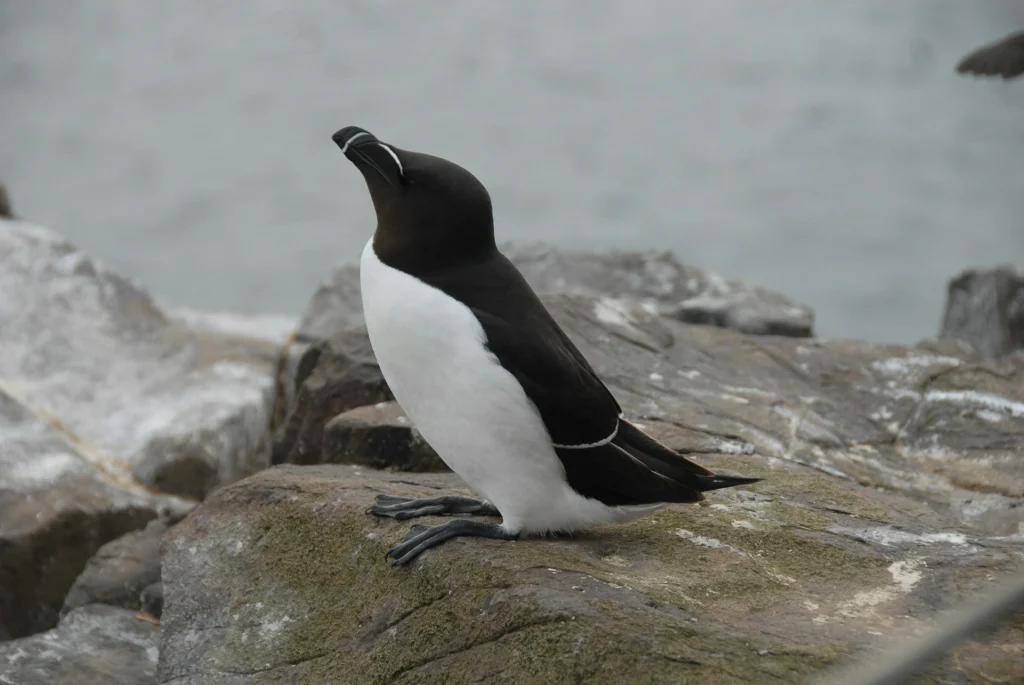
Appearance:
The Razorbill is another black-and-white seabird with a penguin-like profile. It has a thick, laterally compressed black beak with a white stripe, adding to its unique yet penguin-resembling look. Its upright posture on land only enhances the resemblance.
Habitat:
Razorbills breed on rocky cliffs and islands in the North Atlantic, particularly around Iceland, Scandinavia, the UK, and Canada. They spend much of the year at sea.
Diet:
These birds primarily eat small fish such as sand eels, capelin, and sprats. They hunt by diving beneath the waves, using their wings to “fly” underwater.
Behavior:
Razorbills are fast and agile swimmers, capable of reaching impressive depths. On land, they’re social and nest in crevices or under rocks to stay hidden from predators.
Breeding:
They lay a single egg per season, typically in a hidden nook or ledge. Both parents incubate and care for the chick until it fledges and heads out to sea.
Conservation:
While globally not endangered, Razorbills are threatened by habitat disturbance, oil spills, and overfishing. Conservationists closely monitor colonies in vulnerable regions.
Also Read : Orange Birds in Arizona: A Colorful Birdwatcher’s Guide
4. Little Auk (Dovekie)
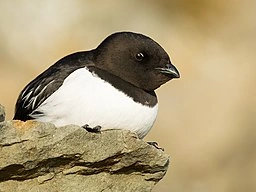
Appearance:
The Little Auk, also known as the Dovekie, is a tiny seabird with a compact black-and-white body. Though much smaller than penguins, its short wings, upright posture, and striking contrast in colour give it a strong penguin-like vibe—especially when seen waddling on rocky shores.
Habitat:
Little Auks breed in massive colonies on high Arctic islands like Svalbard and Greenland. During winter, they migrate south, often appearing along the North Atlantic coasts.
Diet:
They feed mostly on zooplankton, including copepods and krill, which they catch underwater. Their diet can also include small fish and marine invertebrates.
Behavior:
These birds are strong swimmers and fly low over the water. They often forage in large flocks and nest in crevices, rock piles, or scree slopes.
Breeding:
One egg is laid per season, typically tucked into a rocky cavity. Both parents take part in incubation and chick-rearing duties.
Conservation:
Currently listed as Least Concern, but Little Auks are highly vulnerable to shifts in ocean temperatures and prey availability due to climate change.
Also Read : 14 Red Birds in California
5. Great Auk (Extinct)
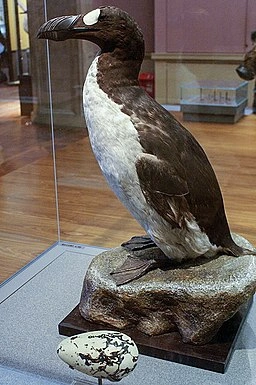
Appearance:
The Great Auk was a large, flightless seabird that looked incredibly similar to modern-day penguins. It had a sleek black back, white belly, upright stance, and a heavy, hooked beak with grooves. Standing around 30 inches tall, it was the closest thing to a penguin in the Northern Hemisphere.
Habitat:
Great Auks lived along rocky, remote islands in the North Atlantic, from Canada and Greenland to Iceland and northern Europe. They bred in dense colonies on isolated cliffs and coasts.
Diet:
These birds fed on fish and crustaceans, which they caught by diving and swimming expertly through cold ocean waters.
Behavior:
Much like penguins, Great Auks were excellent swimmers but completely flightless. On land, they moved awkwardly but formed massive breeding colonies with complex social interactions.
Breeding:
They laid one large egg per year on bare rock. Both parents incubated the egg and raised the chick. The eggs were highly prized by collectors, contributing to their downfall.
Conservation:
Sadly, the Great Auk was hunted to extinction by the mid-1800s for its meat, eggs, and feathers. Its story is often cited as one of the first major conservation tragedies caused by human exploitation.
6. Black Guillemot
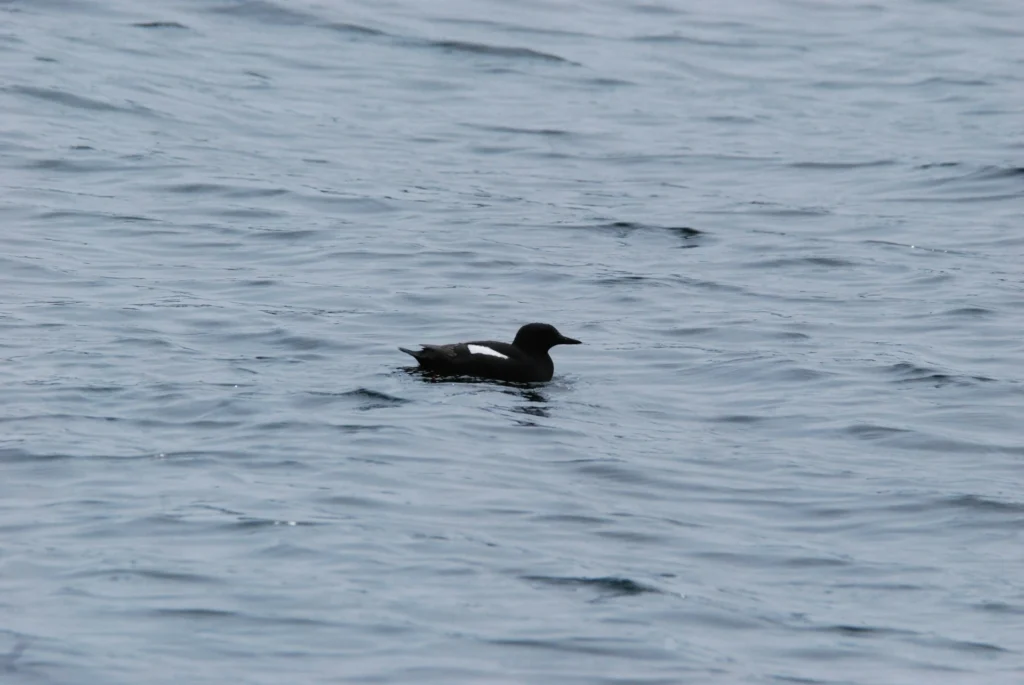
Appearance:
In winter, the Black Guillemot adopts a striking black-and-white plumage that can resemble a penguin from afar. Its upright stance, compact body, and white wing patches on a dark body enhance this illusion. During summer, it becomes all-black with vivid red legs.
Habitat:
This bird is found along rocky coastlines and islands in the North Atlantic, especially around Arctic and sub-Arctic waters. It breeds on cliffs and rocky outcrops and winters near coastal waters.
Diet:
Black Guillemots feed on fish, crustaceans, and marine invertebrates. They dive using their wings and can forage at considerable depths.
Behavior:
They are solitary or found in small groups, often perched on rocks or ice. Their red feet are visible when flying or swimming. They’re known for their whistling calls and strong site fidelity, often returning to the same nesting spot.
Breeding:
Nesting in rocky crevices or under boulders, they lay 1–2 eggs. Both parents take part in incubation and chick feeding.
Conservation:
Populations are generally stable, though threats include oil spills, marine pollution, and warming seas affecting prey availability.
7. Magellanic Flightless Steamer Duck
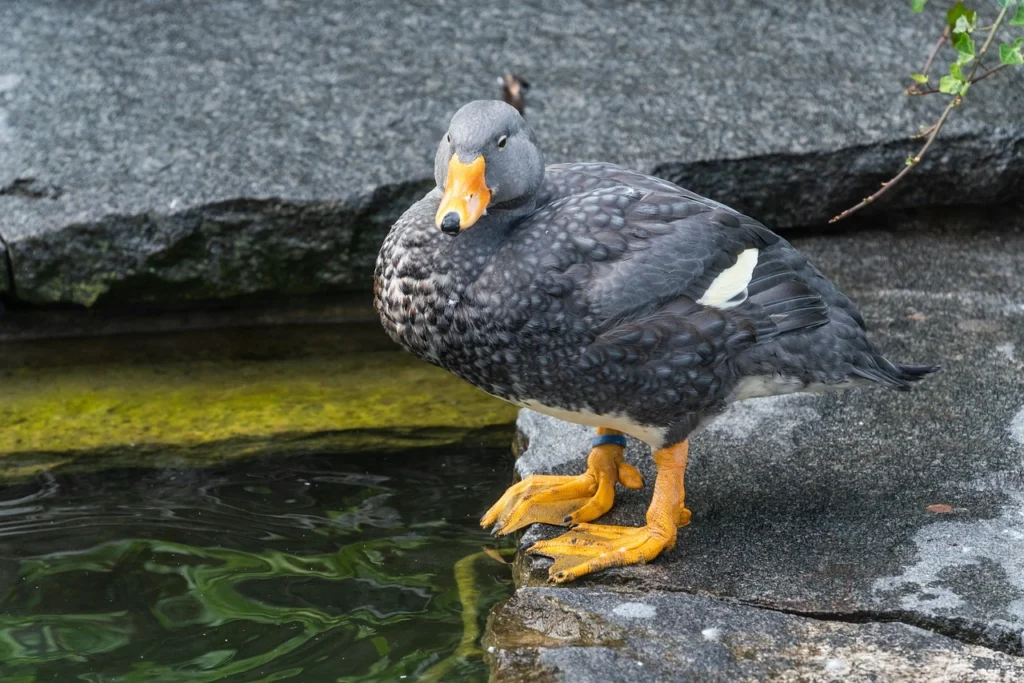
Appearance:
Stout-bodied and heavyset, the Magellanic Flightless Steamer Duck has greyish-brown plumage, a thick neck, and a low-slung build that gives it a penguin-like profile. While not black-and-white like penguins, its waddling gait and flipper-like wings add to the resemblance—especially on land.
Habitat:
This duck is native to the southern tip of South America, especially around Tierra del Fuego, Patagonia, and the Falkland Islands. It lives along rocky coasts, bays, and estuaries.
Diet:
Its diet includes crustaceans, mollusks, small fish, and aquatic insects. It dives and forages underwater, much like penguins, using powerful strokes of its wings.
Behavior:
Unlike most ducks, it cannot fly. Instead, it uses its wings like paddles to “steam” across the water—hence the name. It’s territorial, aggressive, and often engages in splashy chases and fights to defend its area.
Breeding:
Nesting occurs in thick vegetation near water. Females lay up to 10 eggs, and the male guards the nest aggressively.
Conservation:
It is not currently threatened, but because it’s flightless, it is vulnerable to introduced predators and habitat changes.
Conclusion
Penguins may be icons of the Southern Hemisphere, but they’re not alone in their looks. From the dapper Atlantic Puffin to the extinct Great Auk, many birds across the globe share the penguin’s black-and-white charm, upright stance, or underwater prowess. Whether it’s the Little Auk diving in Arctic seas or the Magellanic Flightless Steamer Duck paddling like a pro, these birds offer an incredible glimpse into the power of evolution and adaptation.
Next time you spot one of these curious seabirds, take a second look—you just might think you’ve found a penguin in disguise.

Welcome to World Birds Life, where the wonder of birds takes center stage. My name is Lexi, and I’m passionate about helping you discover the beauty and joy that birds bring into our lives.

